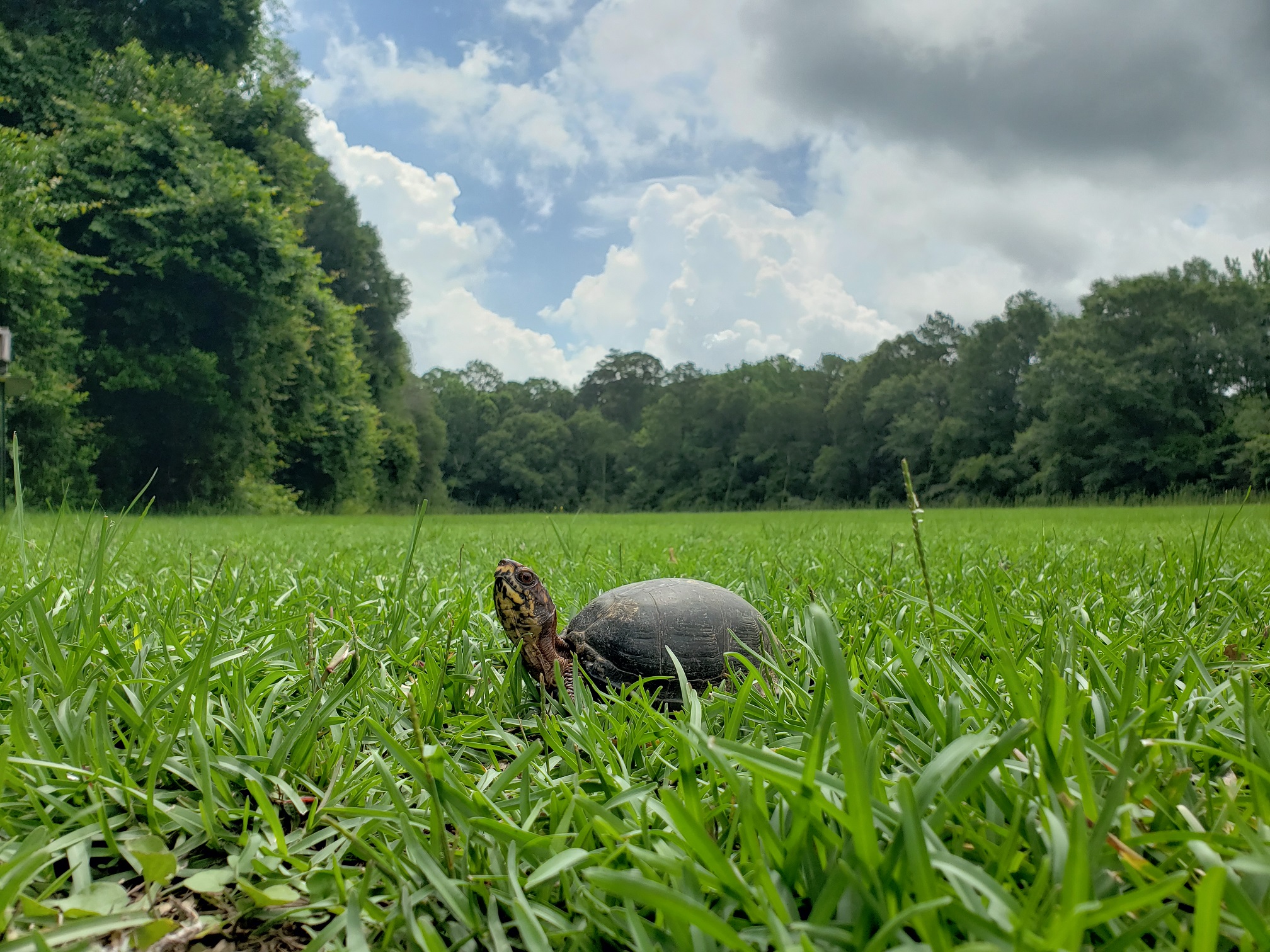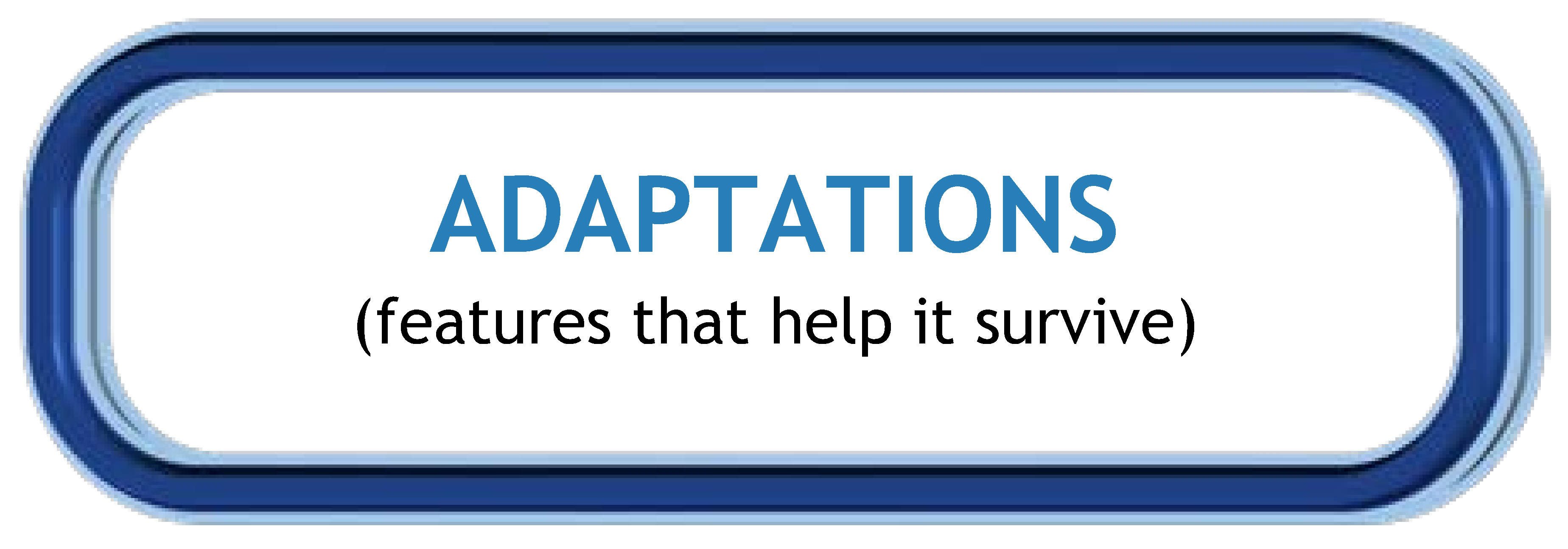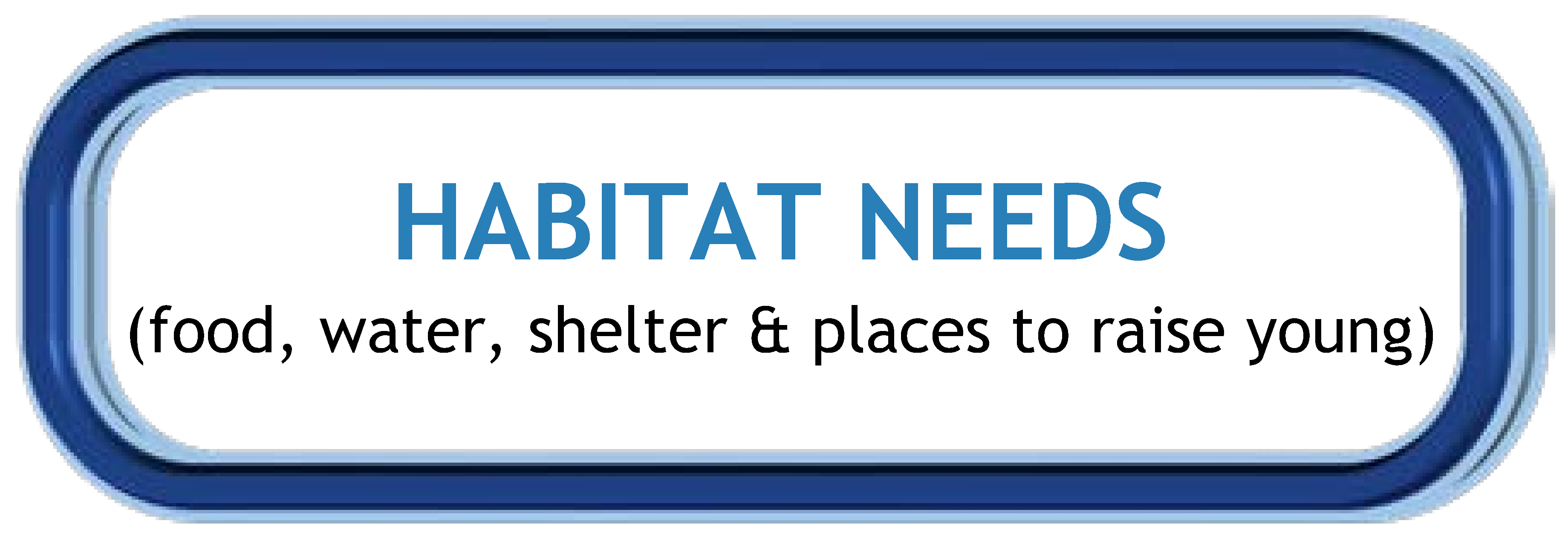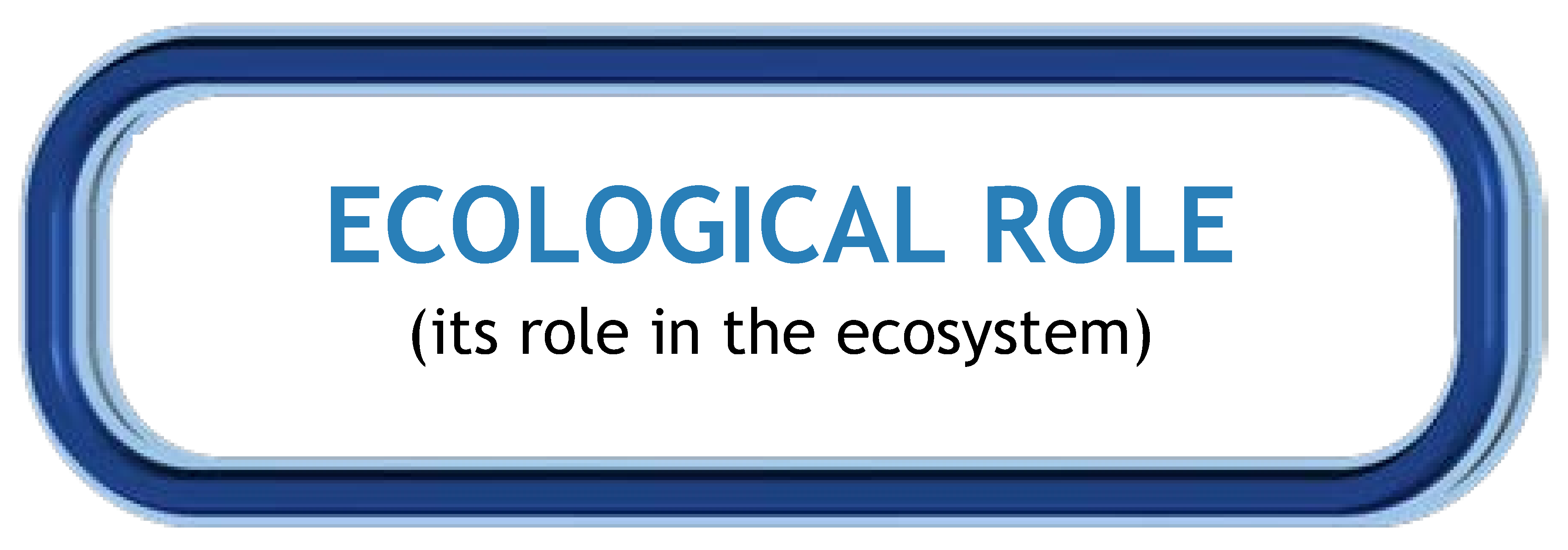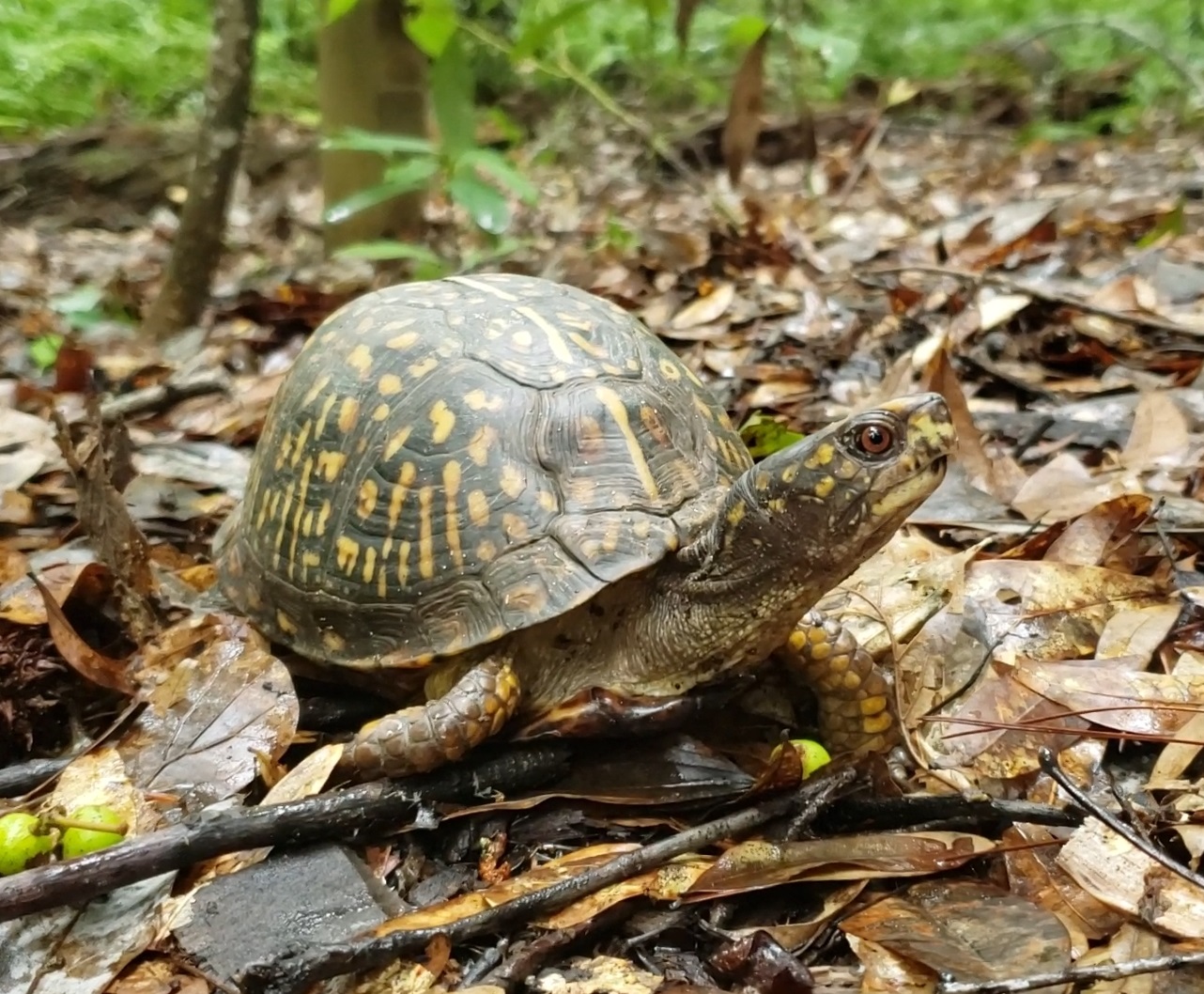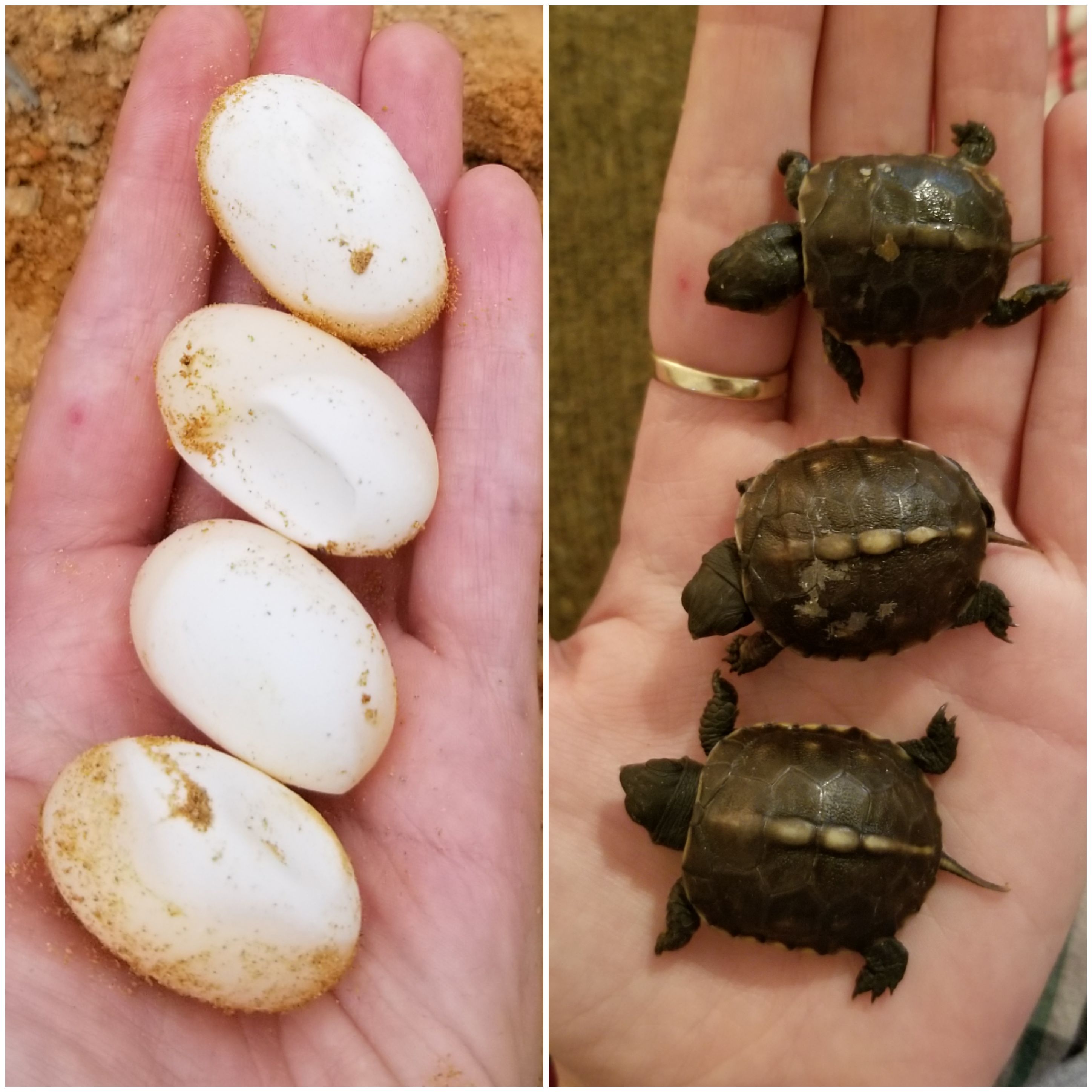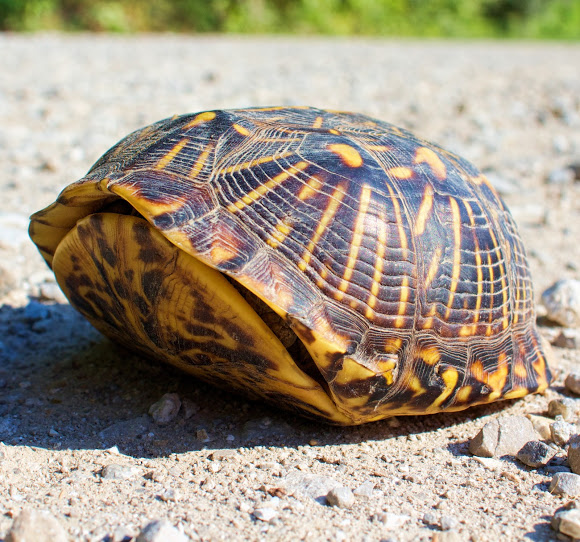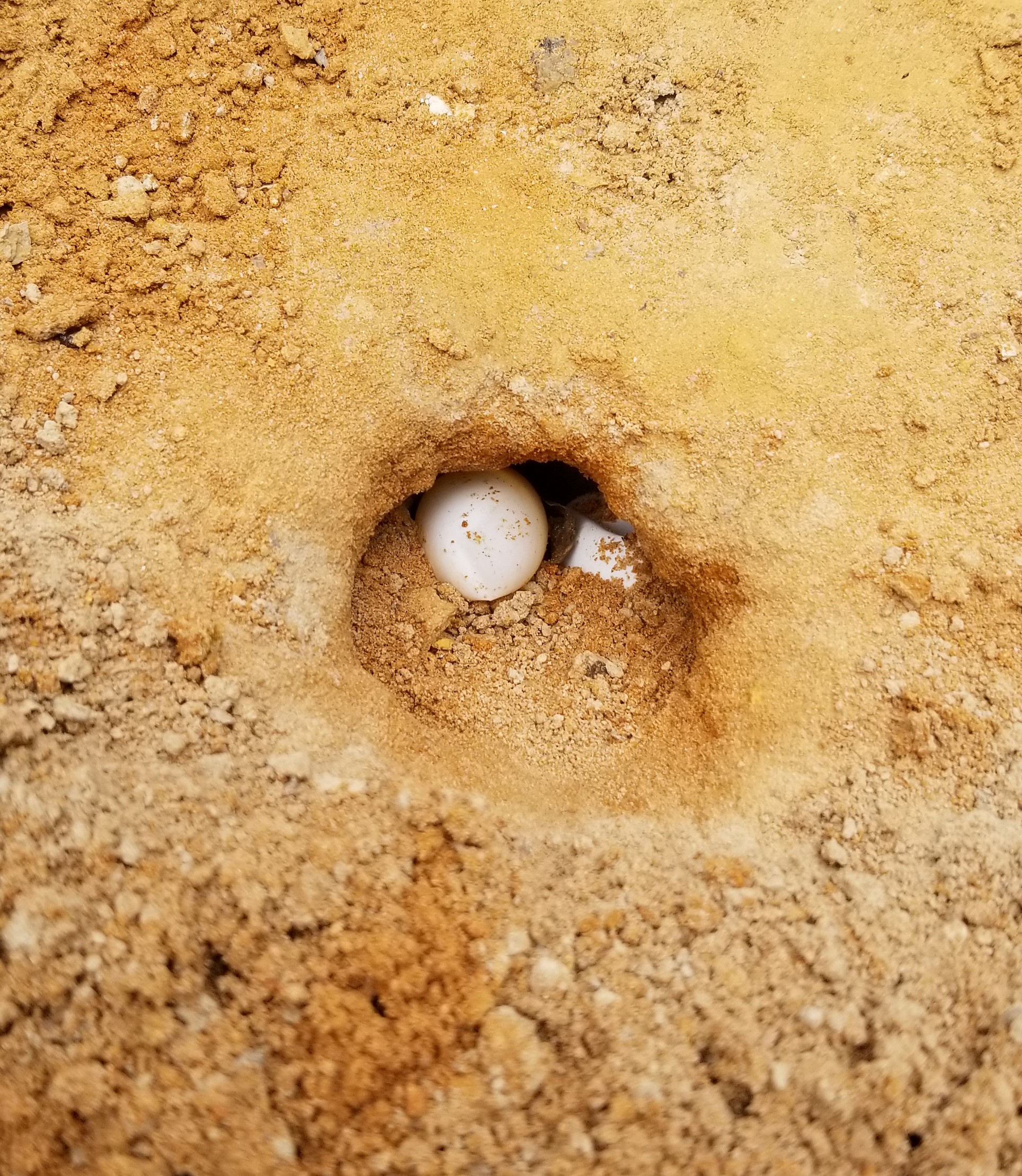Wonders of Wildlife: Eastern Box Turtle
Eastern Box Turtle
Other Common Names: Terrapin
Scientific Name: Terrapene carolina carolina
Found in Alabama: Common to locally uncommon or rare statewide
Diet: Omnivore (eats plants and animals) |
|
Eastern Box Turtle in Habitat
Tyler Burgener
Click on image to enlarge it |
Learn more about...
| CLASSIFICATION |
|
What type of animal am I?
- I am a vertebrate (an animal with a spine or backbone).
- I am cold-blooded, so I cannot control my body temperature.
- I have scales on the outside of my body.
- I breathe with lungs just like you.
- I have 4 legs.
|
Scientists use basic traits to group animals into different taxonomic classes.
For a taxonomic classification chart comparing key traits of common backyard wildlife,
CLICK HERE! |
|
| The Eastern Box Turtle is a REPTILE! |
| IDENTIFICATION TIPS |
| |
|
|
| Size: |
- Adults can reach 8 inches in length and weigh up to 2 pounds.
|
| |
|
|
Shell: |
- A turtle's shell wraps around its body.
- The carapace (top of the shell) is rounded and dome-shaped.
- Female box turtles have a higher dome-shape than males.
- The plastron (the bottom of the shell along its "belly") is flat and hinged.
- Males have a dip (or concave center) in their plastron.
|
Eastern Box Turtle in Habitat
Tyler Burgener
Click on image to enlarge it |
| |
|
|
| Color: |
- Box turtles develop unique patterns of yellow and orange on their scaly skin and on their shells.
|
| |
|
|
| Eyes: |
- Their eye colors range from brown to firey-red.
|
| |
|
|
Juveniles:
(or babies) |
- When babies hatch from their eggs, they are about the size of a quarter.
- A baby has a flat carapace (top shell).
- It is dark and drab in color without yellow and orange patterns.
- It has dark-colored eyes.
|
Eastern Box Turtle Eggs and Babies
Michelle Wright
Click on image to enlarge it |
| |
|
| |
|
| ADAPTATIONS |
| |
| PHYSICAL ADAPTATIONS |
| |
| The Eastern box turtle's shell forms a box when it is closed: |
- Box turtles have a hinged plastron (bottom of shell).
- Because of this, they have the unique ability to pull their limbs, tail, and head into their shell and close it tightly when they are threatened.
- As the shell closes, air is released, creating a hissing sound.
- Many turtles have hinged shells, but box turtles are the only ones that can close their shells completely.
|
Eastern Box Turtle Closed in its Shell
Neidazet - Project Noah
Click on image to enlarge it
|
| |
| |
| BEHAVIORAL ADAPTATIONS |
| |
| Eastern box turtles are diurnal: |
- They are active during the day (diurnal).
|
| |
| Eastern box turtles use burrows: |
- The Eastern box turtle is cold-blooded and does not produce its own body heat like we do.
- To help control their body temperature, they use their feet for digging burrows where they escape the midday heat in the summer.
- During the winter months, they go into a form of hibernation (becoming dormant as if they are in a deep sleep). During this time, they burrow as much as two feet into loose earth, mud, stream bottoms, old stump holes, or existing mammal burrows. The area where they hibernate is called their "hibernacula", and they return to the same spot year after year.
- Staying underground also protects them from predators, extreme temperatures, and forest fires.
|
Eastern Box Turtle Burrowing
Tyler Burgener
Click on image to enlarge it |
| |
| Box turtles have a home range: |
- Box turtles have a very strong homing instinct (ability to find its home).
- A home range is the area in which an animal lives its life from birth to death. Box turtles feed, mate, and hibernate in their home range. It is typically about the size of a football field.
- Their homing instinct allows them to recognize important characteristics of their home range, like locations of food and water.
- If they travel outside of their home range, they will try their hardest to find their way back home.
- This is why it is important to help a turtle cross the road if necessary, and not to bring it home and release it where it would be far from its home range.
|
| |
| LIFE CYCLE |
| |
|
|
| Life Cycle Stages of the Eastern Box Turtle |
| |
|
|
Nest: |
- The female digs a hole in the ground, lays her eggs, then covers the hole.
|
Eastern Box Turtle Nest
Michelle Wright
Click on image to enlarge it |
| |
|
Eggs: |
- Females lay around 4-5 eggs per clutch.
- Sometimes 2 or more clutches may be laid in one breeding season.
|
| |
|
Young: |
- Babies are about the size of a quarter when they hatch from the egg.
|
| |
|
|
Life Span: |
- Average life span is between 25 and 30 years but can live up to 50 years.
|
| NATURAL Habitat Needs |
ADULTS |
YOUNG |
| Food |
- Adults are mostly herbivores (eat plants)
- Feed mostly on mushrooms, berries, wild grapes, persimmons, flowers, weeds (like dandilion leaves), and roots.
|
- Young are mostly carnivores (eat animals).
- Feeding on worms, snails, slugs, insects, fish, frogs, salamanders, snakes, eggs, and dead animals.
|
| Water |
- Some hydration comes from diet, and some comes from puddles, streams, and ponds located in their habitat.
|
| Shelter |
- Habitat varies and includes open woodlands, pastures, and marshy meadows.
- Prefer habitats that have moist, forested areas with lots of underbrush.
- They use stream banks, wetlands, and pond edges during hot and dry weather.
|
| Places to Raise Young |
- Females dig nests in sandy or loamy soil.
|
|
BACKYARD
Habitat Needs |
ADULTS |
YOUNG |
| Food |
- Plant native berry-producing plants like wild grapes and blackberries.
- Do not remove moist, decaying logs for bugs, snails, worms, amphibians, reptiles, and fungi.
|
| Water |
- Provide a shallow pond or allow areas where puddles can form.
|
| Shelter |
- Create shady, un-mowed grassy areas.
- Do not remove leaf litter and logs.
|
| Places to Raise Young |
|
|
| ECOLOGICAL ROLE |
| |
|
| Animals play an important ecological role in the health of habitats and ecosystems. |
| |
|
|
Food Source:
|
- Eggs and young are eaten by chipmunks, raccoons, foxes, skunks, dogs, snakes, fire ants, and more.
- Adults are sometimes killed and eaten by foxes and other larger mammals, but it’s rare.
|
| |
|
| Seed Dispersal: |
- Box turtles disperse (or move) the seeds of the berries they eat.
|
INFORMATION SOURCES FOR THIS SPECIES
.
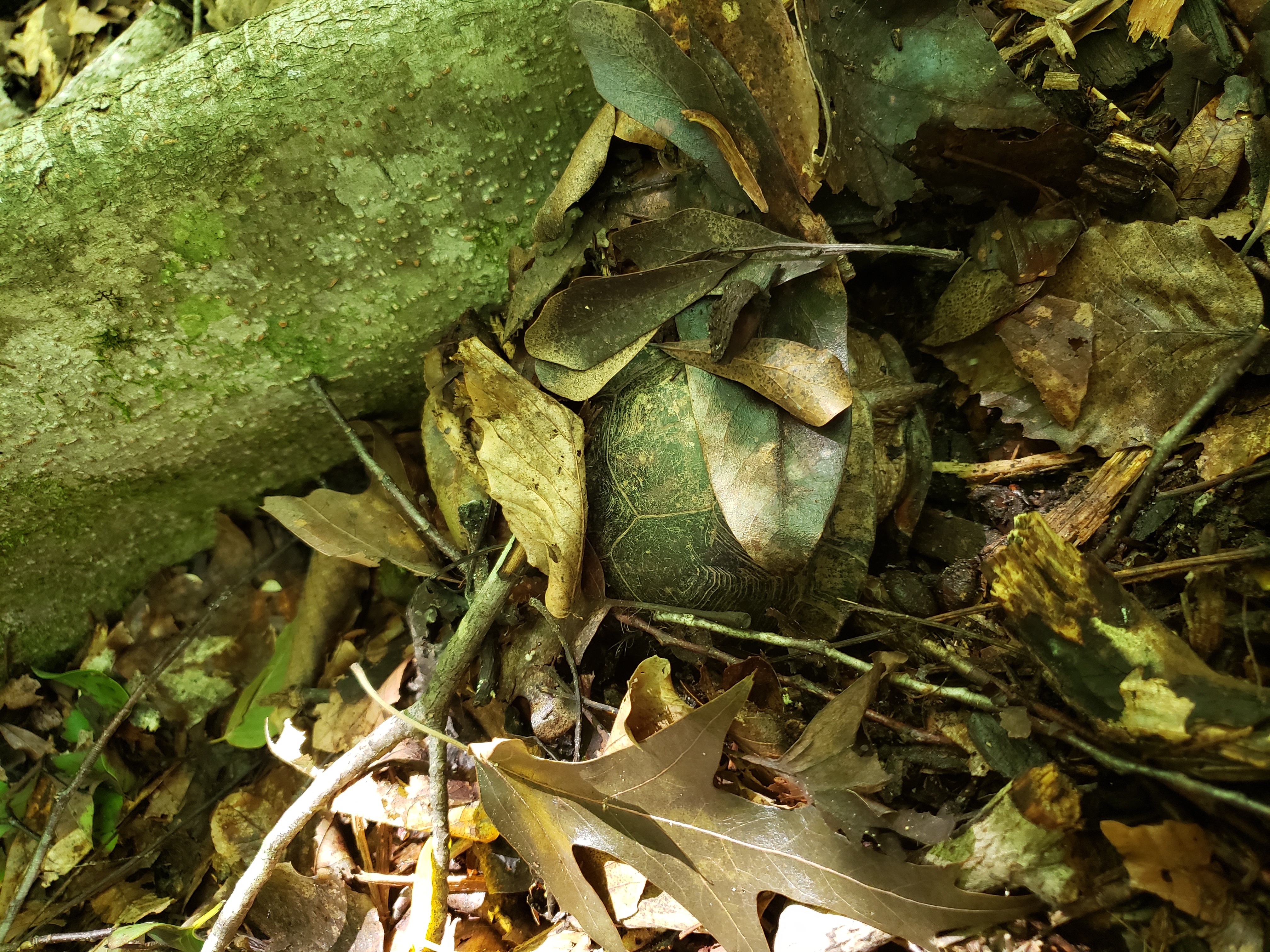


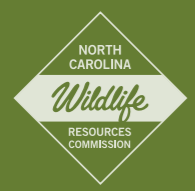
 Wildlife Tag
Wildlife Tag
